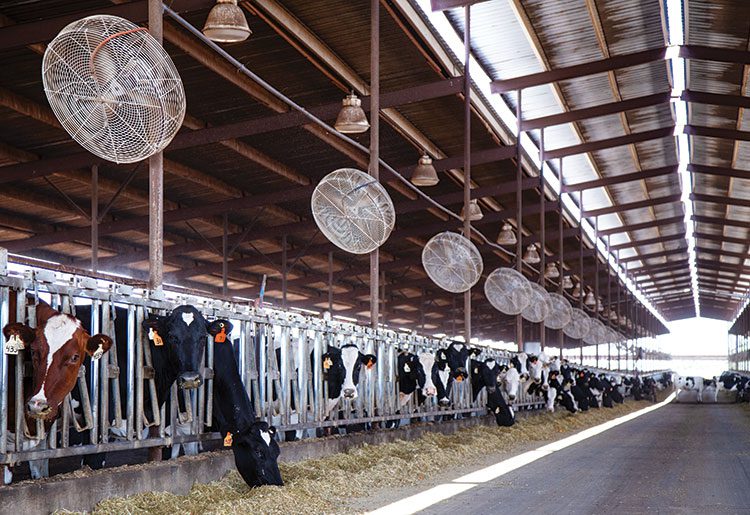
Return to July 2022 newsletter
Extreme heat testing Texas dairies
By Daren Turley
Executive Director, Texas Association of Dairymen
As you well know, this summer is terribly hot and extremely dry. Over half the country is in a drought, and most of Texas is classified as in an extreme or exceptional drought.
Current conditions in our state recall those of the extreme heat of the summer of 2011 and the drought that year that went into 2012.
While Texans in general are complaining about the temperatures, those temperatures are more of a concern and matter of economic survival and food production for dairy producers and others in agriculture. Forage cannot be grown, and hay is getting more expensive and being brought in by farmers from longer and longer distances.
Milk prices for producers are good, but the input cost of feed, fuel and labor continue to increase. The question then becomes, will milk prices be strong enough to cover the rising expenses of producing milk all year or even longer?
Dairy farmers can also suffer financially due to the extreme heat like we’re seeing. Economic losses due to heat stress are estimated to be $900 million in the U.S. dairy industry, according to an article by Texas A&M AgriLife Extension. These losses are due to reduced milk yield, decreased reproductive performance and increased culling.
Yet Texas dairy herds are continuing to give milk, even in this heat.
Our dairy farmers are more used to the heat than those in some parts of the country and undertake cooling practices – such as shade, sprinklers, water and fans – to keep their cows comfortable and producing. But the summer heat has had some impact: Texas has fallen back to the fourth largest dairy producing state in the U.S. after several months ahead of Idaho in the third spot.
The Texas dairy industry is not alone in seeing a drop in milk production. The nation’s milk supply is down for the fifth consecutive month and also is being hurt by intense heat and rising input costs. The USDA reports the nation’s milk supply is down 0.7% from May 2021.
In other recent dairy news, Dallas-based Borden announced the sale of its Texas operations to Hiland Dairy. Just like our Texas dairies continue to grow, so do the dairy processors. The milk processing industry continues to consolidate and get much bigger, just as our cheese plants have done. This is one of the last fluid milk processors in the state that uses independent milk to fill its needs. It will be interesting to see how the ownership change will address the independent shippers since the cooperatives are not taking on production from new dairies in this time of excess milk.
Finally, there is an ongoing conversation about reforming the Federal Milk Market Order. The dairy industry has changed greatly since the current rules were implemented, and milk now is transported greater distances across America every day. The ability for processors and producers to come to some agreement will be a very challenging undertaking. This issue will continue to be discussed regionally as different areas of the country have different processing plants and marketing issues. Even though Texas has all types of milk processing, the issue still has a big impact on the price paid to producers as excess milk is marketed out of this Federal order each month.
This will be a time of change for producers. Pray for rain and good milk prices for the year. Milk markets will change and continue to mature, but Texas dairy farmers have shown they can produce lots of milk and they will continue to raise the standard of the milk produced.
Return to July 2022 newsletter